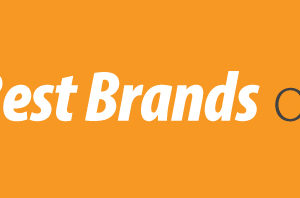
Branding requires a great deal of time and effort to both form and maintain – and that can lead to high costs. It doesn’t have to be that way though. Through 6 techniques, provided by HubSpot, businesses can develop a successful brand for less.
Form Buyer Personas
82% of companies with better value propositions also use buyer personas. Understanding who your buyers are, from basic demographics to psychographic preferences, allows you to create a brand better fit for their needs. Identify the common characteristics of your target buyer to create a fictional character to keep in mind when making branding decisions. Understanding personas before making other branding decisions can save your business a lot of money in the long-run.
Create a Brand Identity and Voice
With the persona in mind, your business can now better develop its identity and voice. The brand identity provides consumers awareness of what your brand is. The voice is the tone the brand uses in public communication.
Carefully identify and define what makes your business what it is. Make sure the identity stays consistent, as well as the voice. Define the brands values and what it represents. Keep this in mind for every brand communication.
One successful example of establishing a brand voice was the Zoological Wildlife Foundation, which, during its rebrand, made forming a brand voice top priority. It resulted in an overall online presence increase of 343% and website traffic alone seeing a 63% boost. Carefully planning identity and voice will maintain a clear and memorable image that requires less maintenance; maintenance that may have been required for a less consistent brand.
Consistent Social Media
Consistency is an important theme to remember, and social media is no exception. When forming social media brand pages, figure out where your personas are spending the most time. You can create a presence on multiple platforms, but devote the most time and resources into the platforms your personas use most; this way they are their most effective.
Remember both the brand identity and voice when communicating online and post often. Avoid long lapses of time between posts by planning and scheduling social messages. Social media can be a powerful branding tool because its costs are relatively low, and, depending on the industry and consumers, can offer major returns. Even if it isn’t your highest ROI generator, it acts as a great source of information for the consumer and lets them get a clearer sense of your brand identity.
The Power of Inbound: Blogging
Inbound marketing involves attracting the potential customers to you, rather than pushing content onto them in the form of traditional marketing. One way for new customers to find your website is through high quality blogs that provide solutions to persona problems. Blogging, like social media, is inexpensive, but there is a concern of the time required. Create an editorial calendar to plan out blogs and ensure that blogging, too, is frequent and consistent.
Focus on Customer Service
Customer service is an important aspect of every business, but often doesn’t come to mind when we think of branding. Brands like Zappos, however, make this their differentiator and use excellent customer service to add to their brand value.
Consumers don’t have to patronize your business. This is especially true when there are many competitors to choose from. By creating a positive customer service experience, you not only create repeat customers, but customers that are going to amplify your brand by sharing their positive experience with friends. Positive customer service experiences will lead to a positive perception of your brand by customers and the public.
This word-of-mouth (WOM) from customers is earned and saves the company money on other advertising and marketing tactics, ones that may be costly and less effective than WOM anyway.
Use Co-Branding Techniques
Good branding is important, but its awareness will take time to build. To quicken this process, consider a strategic co-branding relationship. Choose a business that makes sense but also has a larger following. Some things to keep in mind:
- Consider your partner’s audience. Would they be interested in your brand? Is this audience difficult for you to reach without this partnership? How well does it trust your co-brand? That’s crucial to getting them to listen to you, too — people don’t trust traditional advertisements anymore. So make sure your partner reaches the audience in a way that instills confidence, not doubt.
- Have something to offer your co-brand. Just like Toner asked, “what do they not have?” The experience should be a win-win-win: for you, your co-brand, and the consumer.
- Consider selecting a well-known and respected nonprofit as a co-brand. More and more people’s purchasing decisions are based on a brand’s social responsibility – in fact, 85% of millennials say that makes them more willing to recommend a brand.
Because a co-branding relationship should be mutually beneficial, it should cost you little to initiate.
Branding on a Budget
Branding is important to developing a successful business, but the costs can be a substantial burden. By clearly planning voice, identity, and personas, you can easily make branding decisions and maintain brand consistency. Low-cost online tools like social media and blogging also help you to better establish your brand. Relationship building is also a cost-effective strategy, through customer service for customers and co-branding for brand partners. All steps together can ensure your business a great future.




